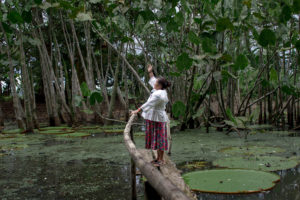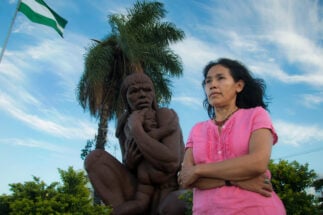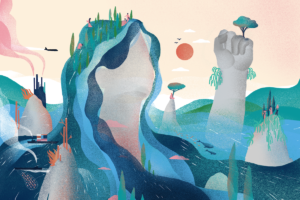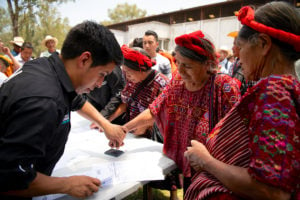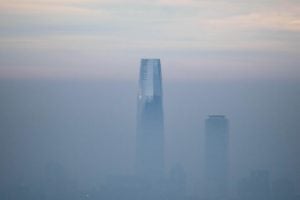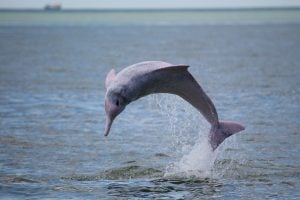Marmoset monkeys leap from one bank to the other, over water lilies that look like giant saucers floating on the Marañón River, here in the north-west of the Peruvian Amazon. Ema Tapullima watches them pass through the trees as she collects water.
“They come to us because nobody threatens or mistreats them here,” says Tapullima, a 63-year-old Kukama-Kukamiria Indigenous leader of the community of Puerto Prado. She is one of the guardians of the 100-hectare Iwirati Natural Paradise, a private conservation area that the community protects voluntarily.
In her language, “Iwirati” means trees, and it is among imposing cedars and rubber trees that Tapullima has made some sort of paradise possible, in the face of the environmental devastation that is pushing the Amazon and its species, in this corner of Peru and across the rainforest, towards a tipping point.
She is one of many women who have put themselves on the frontline of defence against illegal logging and mining, wildlife trafficking and other environmental crimes. Some are exercising leadership in voluntary conservation initiatives. Others carry out often invisible work, while bearing the brunt of prejudices and inequality.
The unseen line of defence
“We didn’t know anything about conservation,” said Tapullima, of the time when her community began to think about creating a private conservation area (PCA), a government recognition that allows individuals and companies to care for their territory and become part of Peru’s system of protected natural areas.

In 2014, the Iwirati Natural Paradise became the first PCA located in an Indigenous community to be recognised by the state. Since then, the families of Puerto Prado have ensured that the forest’s life lives on, despite threats from illegal loggers and poachers.
There are currently 139 PCAs conserving more than 394,000 hectares in Peru, of which at least 78% are Amazonian forest. In addition to these, other voluntary initiatives exist, such as the 168 concessions for conservation and ecotourism granted to citizens on public lands for up to 40 years, terms that can be renewed.
“We are communities, families, producer associations and ordinary people in this strand of conservation that nobody looks at and, therefore, is not valued or encouraged,” says Karina Pinasco, a biologist who leads Amazonía Que Late, a national network of 180 community and voluntary conservation initiatives, whose projects collectively cover more than 2 million hectares across Peru, and which the organisation claims helps to save the state 11 million soles (US$3 million) each year.
“We protect territories that we want to pass on to the next generations, but we are vulnerable to greater threats because we are invisible,” says Pinasco. She is also the founder of the Pucunucho PCA, a forest that was degraded by illicit coca cultivation and which she restored alongside her mother.
We protect territories that we want to pass on to the next generations, but we are vulnerable to greater threats because we are invisibleKarina Pinasco, Amazonía Que Late
The International Union for Conservation of Nature (IUCN) has warned that these voluntary, privately led initiatives, such as PCAs and concessions, are “in danger of becoming one of the ‘lost children’ of the world’s protected area community” as they are not fully backed and supported by governments.
In Peru, gender-related data on conservation area management is not always made available – rarely even to account for who owns the initiatives, let alone the workforce.
For Eliana Rojas, who has consulted on gender and Indigenous relations for various organisations, this gap makes women’s “differentiated management and how women contribute to conservation invisible”. Women, she adds, “are also completely invisible in the protection mechanisms for environmental defenders.”
Analysis by Diálogo Chino of data from the National Service of Natural Areas Protected by the State (Sernanp) and the National Forestry and Wildlife Service (Serfor) found that only 11% of PCAs in Peru are under the guardianship of a woman, compared to 29% for men. The figure is much lower in concessions on public lands, where only 6.5% are headed by women.
In 2008, Tapullima became the first woman to be elected lieutenant governor in the Loreto region, where Iwirati is located. Her leadership in this role and in her conservation work contrasts, however, with the situation elsewhere in the Peruvian Amazon, with only 4% of its Indigenous communities headed by a woman, according to the last national census.
Making headway
Various observers have highlighted the positive role women can play in the conservation of nature, often as a result of knowledge gained from responsibilities that, in many contexts, have been reliant on their work, such as food production, seed guardianship and household management, among others.
“Evidence demonstrates that participation and leadership of women in natural resource and land management leads to better governance and environmental outcomes,” according to research conducted by the World Wide Fund for Nature (WWF), CARE and EnGen Collaborative, an expert group focused on the intersection of gender and environment.
However, the organisations say, this is often overlooked in conservation strategies, with their study underscoring how women face barriers to participating in, influencing and benefiting from conservation.
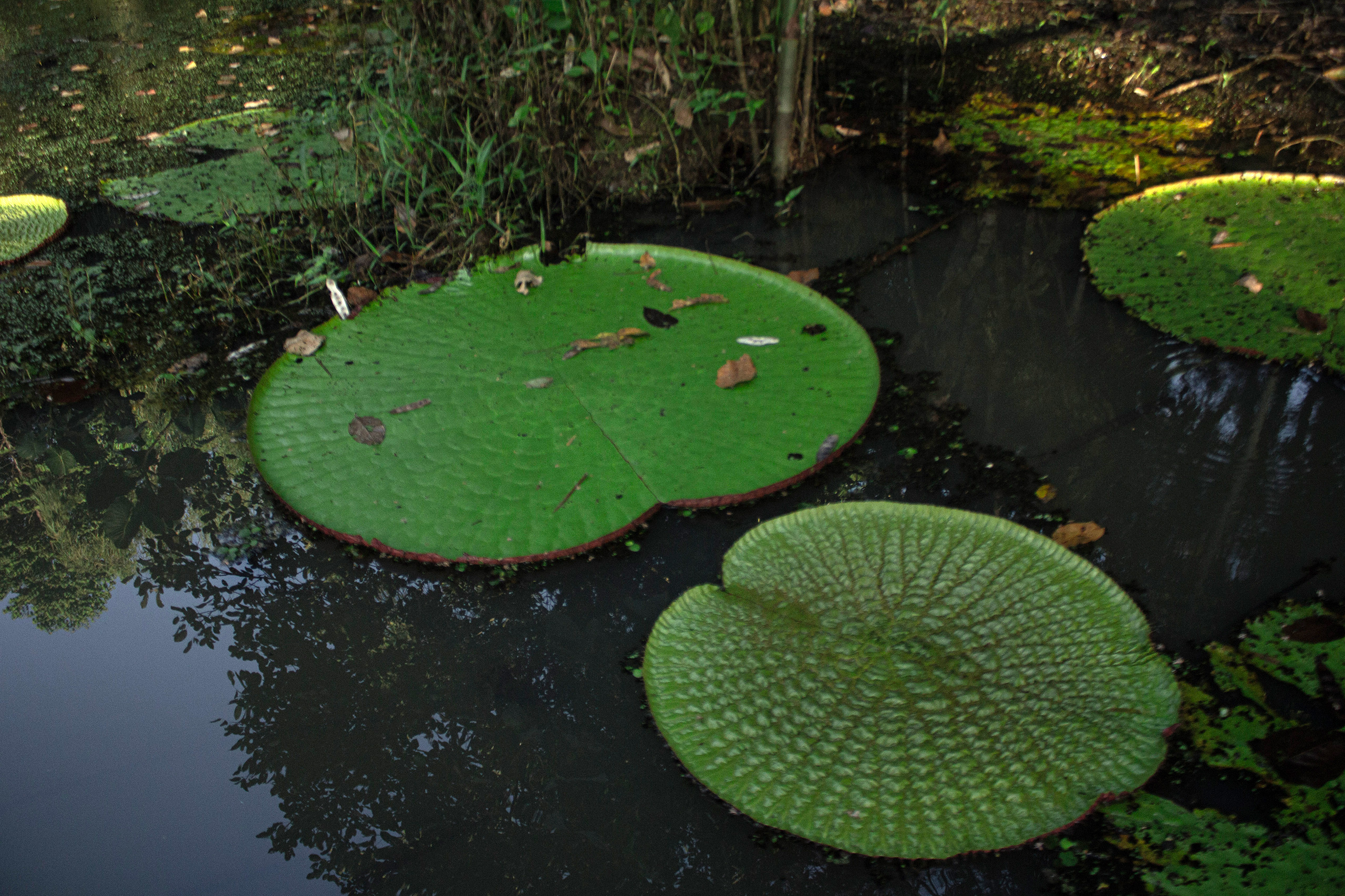
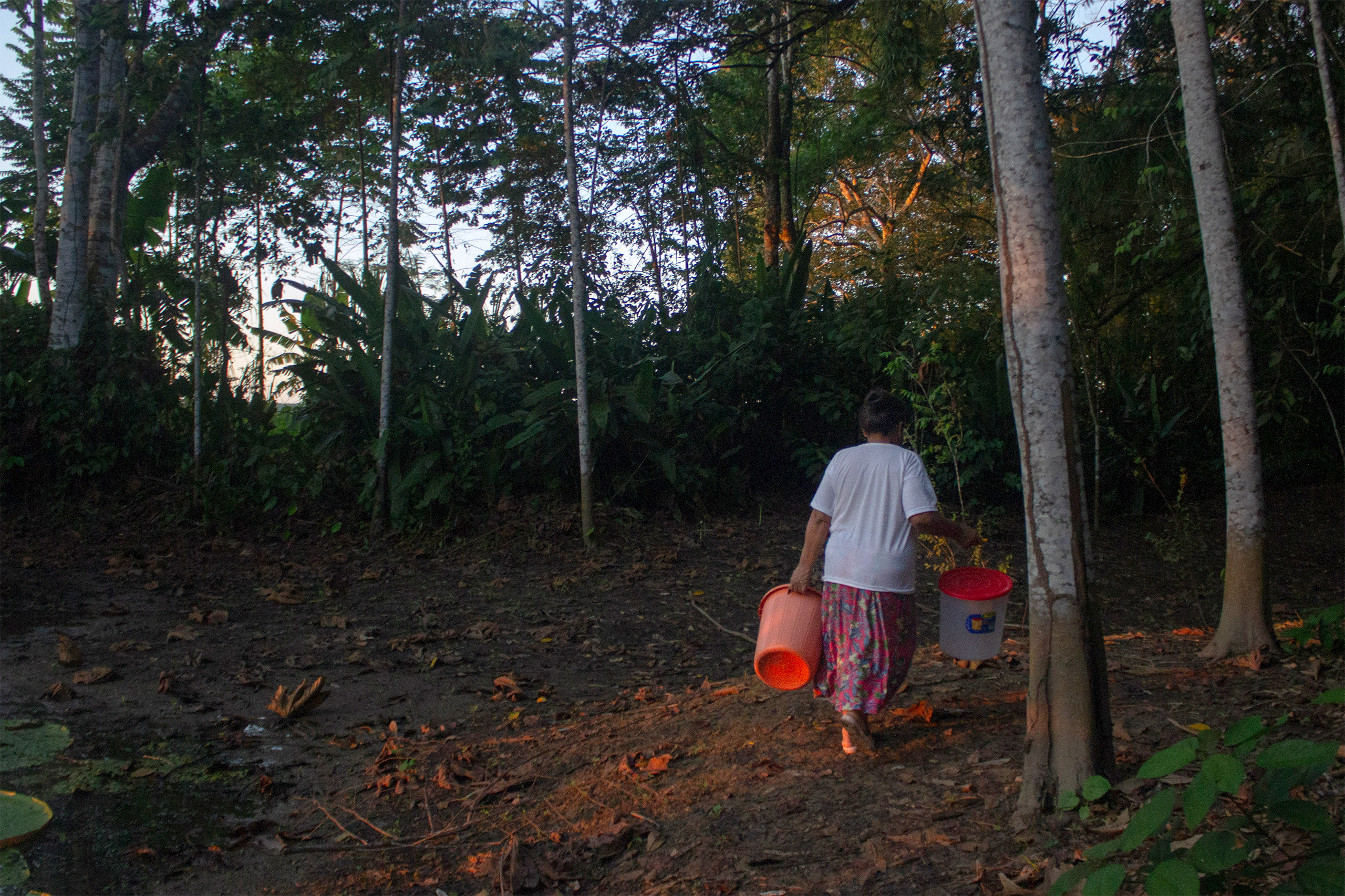
Mirko Ruiz, gender coordinator for Conservation International Peru says that “We are convinced that [good] conservation comes from their ancestral knowledge” – a statement echoed by Indigenous leaders in the Peruvian Amazon.
“We are the ones who are more in contact with nature, even though men would appear to be more so,” says Teresita Antazú, a Yanese Indigenous leader and head of the women’s programme of the Interethnic Association for the Development of the Peruvian Rainforest (Aidesep), an organisation representing Amazonian Indigenous peoples. “The leaders talk about what affects the communities, but almost never say that women are the ones who always have to manage them.”
For Antazú, a decisive step was taken in 2018, with the creation of Aidesep’s Indigenous Women’s Agenda, which seeks parity and equity in decision-making. This is “a feminist echo” of similar Indigenous movements in the Amazon, notably in Brazil, explains Eliana Rojas. “Although Peru is lagging behind, [the agenda] is giving greater visibility to women defenders, who are the first to raise the alarm in the territories,” she adds.
Threats along the way
Peru is the third most dangerous country in South America for environmental defenders, data from human rights platform Global Witness has shown. Their reporting also highlights how women face a double challenge in this violence: the struggle to protect territory and the defence of their right to speak out.
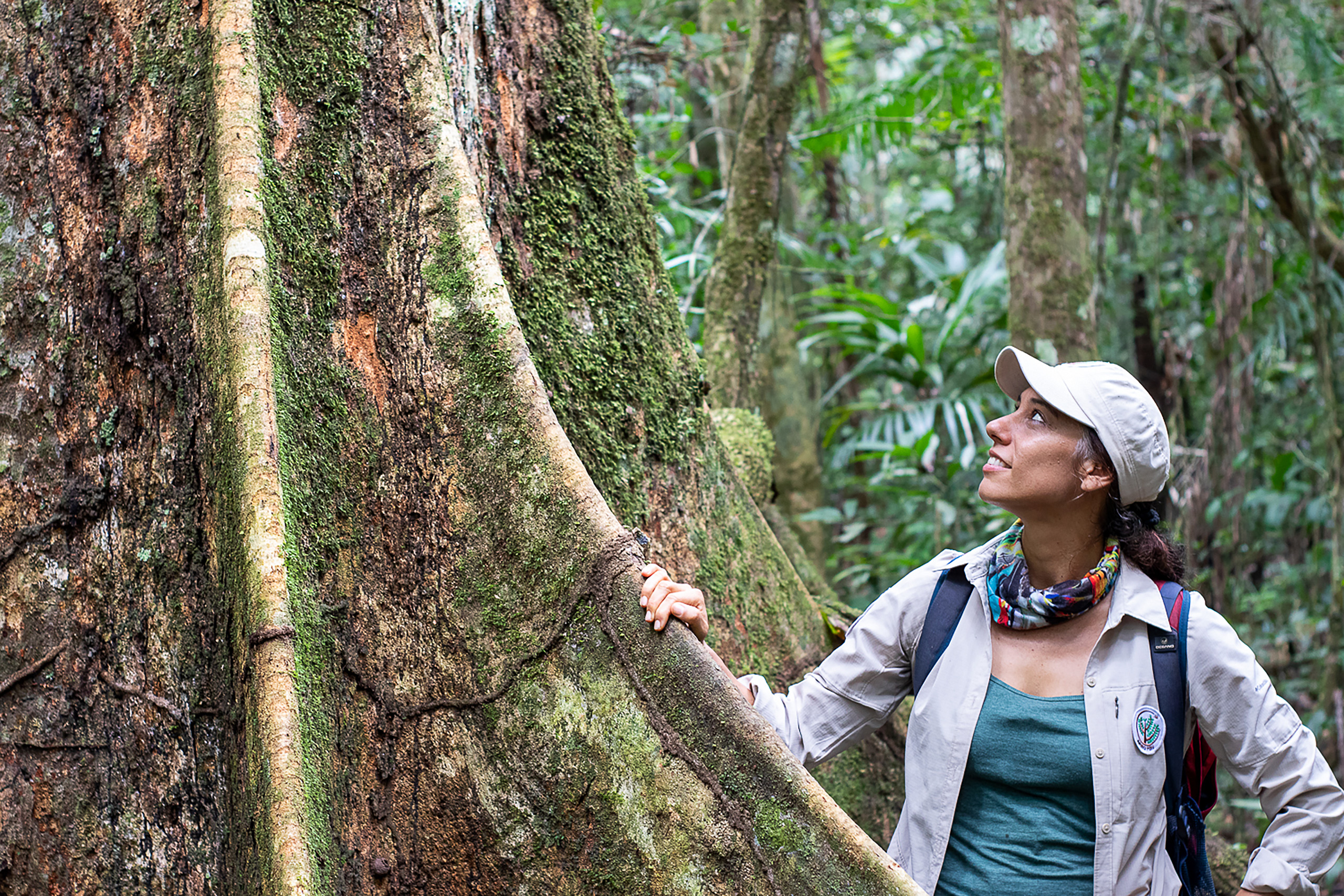
“My voice is not heard,” says 45-year-old Tatiana Espinosa, a forestry engineer who defends ancient trees on the verge of extinction. She says she has tried dozens of times to talk to loggers who surround – and even invade – the conservation concession she leads with her sisters in Madre de Dios, a region in the south of the country that is also plagued by illegal mining.
“When I went alone to stop the machines, they wouldn’t say anything to me, and that’s when I realised that all I needed was a man by my side for me to be noticed,” says Espinosa, who says she is constantly threatened for standing up to illegal loggers, and protecting this 916-hectare forest.
But it’s not just the loggers in the forest: she has also been the target of mockery and attacks from other figures and engineers in the logging sector. “They want to ridicule me, saying that I spend all my time hugging trees, that I’m anti-development and that my smile isn’t going to win me anything,” says Espinosa, who won the Dr Jane Goodall Hope and Inspiration Ranger Award in 2018. “You don’t say those things to a man.” Leyda Rimarachín, from the Bosque Berlín PCA in the Amazonas region, says it is common to hear such phrases. “When I talked about conservation, I was told I was crazy,” says the biologist, who oversees protection of a 59-hectare forest that is home to the critically endangered yellow-tailed woolly monkey (Lagothrix flavicauda).
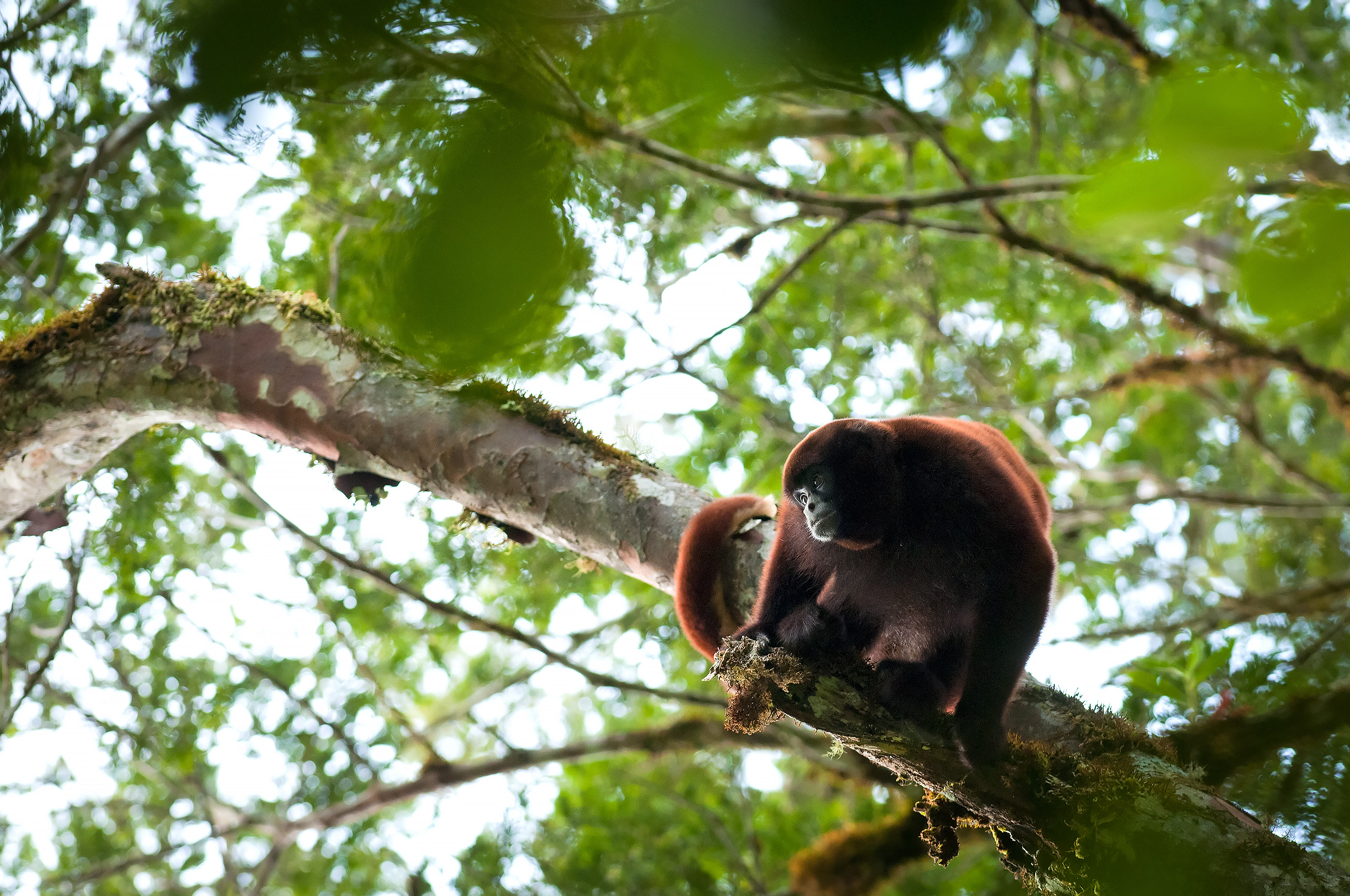
An IUCN study described how such labels undermine the credibility of women environmental defenders and even discourage others from pursuing such causes. “They asked me why I studied, if I was only going to go back to the bush to do nothing,” recalls Rimarachín – who is now vice-governor of the Amazonas region.
New challenges
Peru is one of the countries that is yet to ratify the Escazú Agreement, the landmark treaty that is the first to protect environmental defenders in Latin America and the Caribbean. “It is as if the authorities are not interested in addressing this wave of violence,” Eliana Rojas says of this official reticence to ratify.
A number of proposed law changes are currently in process in the Peruvian legislature that various authorities and organisations have warned would weaken environmental regulations. “There are very strong economic interests behind it,” explains biologist Karina Pinasco.
In this landscape, Tatiana Espinosa is not giving up her fight to protect the Amazon and prevent the last of the age-old shihuahuaco trees from being wiped out. “We feel alone. We are putting our lives at risk in order to defend this ecosystem,” she says. “Now we must not only conserve, but be prepared for an all-out defence.”
This story was produced with the support of Earth Journalism Network (EJN).
